Pasta all’Amatriciana is a simple and delicious classic Italian pasta recipe from Lazio with pretty ancient origins. It’s popular with kids and adults alike throughout Italy and abroad!
History
Amatriciana, also called matriciana in the local dialect, was originally just a white condiment (no tomatoes!). This original version is called ‘alla gricia’. This was apparently the main meal for Amatrice shepherds.
The shepherds carried pieces of pecorino in their packs, along with bags of black pepper, dried pasta, cured pork cheek and lard. Between the seventeenth and eighteenth centuries tomatoes were imported to Italy and a tomato sauce was added to the recipe.
Amatrice became famous for creating this ‘new’ recipe and in fact the town has held an annual festival in celebration of amatriciana for more than 50 years. In 2016 the festival was cancelled because of the earthquake which happened just a few days before the date of the festival. It was held instead in Rome in December.


The Romans love Amatriciana!
Although it is not originally from Lazio (during the Kingdom of the Two Siciiys, Amatrice belonged to Abruzzo), amatriciana has become a classic Roman recipe. However, it is more often served with bucatini in Rome and spaghetti in Amatrice. Both pastas work really well in this dish.
The people of Amatrice are very strict about the ingredients of this sauce and have been known to take offense when chefs become creative with their own versions. There’s a lovely story of when two Michelin star chef Carlo Cracco confessed that he put garlic in his amatriciana and the Amatrice town council accused him of ‘a lack of judgement’ on their Facebook page!
The recipe below is based on the original, except for the use of olive oil instead of lard. Bucatini or spaghetti all’amatriciana is a recipe that everybody loves, especially kids! So, it’s well worth adding to your own pasta repertoire if it isn’t there already.
Ingredients
Pasta: In Amatrice, spaghetti is the traditional choice for this dish, while in Rome, bucatini is often used. Both types of pasta work well for Amatriciana, so you can choose based on your preference or availability.
Guanciale: The authentic and traditional cut of pork for Amatriciana is guanciale, which is cured pork cheek. It adds a rich, savory flavor to the sauce. If guanciale is unavailable, thick-sliced pancetta is a suitable alternative.
Extra Virgin Olive Oil: Some recipes omit olive oil since the guanciale releases enough fat as it cooks, but adding a small amount of olive oil enhances the flavors of the sauce.
White Wine: A splash of dry white wine is used to deglaze the pan after cooking the guanciale, lifting the flavors and adding depth to the sauce.
Canned Peeled Tomatoes: High-quality canned peeled tomatoes are ideal for this sauce. If you prefer fresh tomatoes, blanch them briefly to remove the skins, then chop and use them instead of canned. The tomatoes will break down into a smooth, flavorful sauce.
Pecorino Cheese: Pecorino from Amatrice is traditionally used due to its milder saltiness compared to other varieties. However, other varieties like Pecorino Romano can also be used for a slightly saltier taste. If pecorino isn’t available, you can substitute it with Parmigiano Reggiano, although this will alter the traditional flavor profile.
Peperoncino or Chili Flakes: These add a subtle heat to the sauce. Adjust the amount to suit your preference.


Expert Tips
Go the Extra Mile for Guanciale: I recommend trying to source good-quality guanciale, as it’s crucial for achieving the authentic flavor of Amatriciana. Guanciale can be found at specialized Italian grocery stores, high-end delis, or ordered online from reputable sources that import traditional Italian ingredients.
Deglaze with Wine for Depth: Deglazing the pan with white wine after cooking the guanciale adds complexity to the sauce by lifting all the flavorful bits from the bottom of the pan. Let the wine reduce before adding the tomatoes.
Save Pasta Water to Perfect the Sauce: Before draining your pasta, reserve about a cup of the starchy pasta water. If the sauce seems too thick after combining with the pasta, gradually add small amounts of the reserved pasta water.
Step by Step Instructions
1) Clean the pork cheek thoroughly by removing any skin or crust and cut it into small strips.


2) In a large frying pan, heat the extra virgin olive oil over medium heat. Add the strips of pork cheek and cook until browned and crispy, about 5-7 minutes.
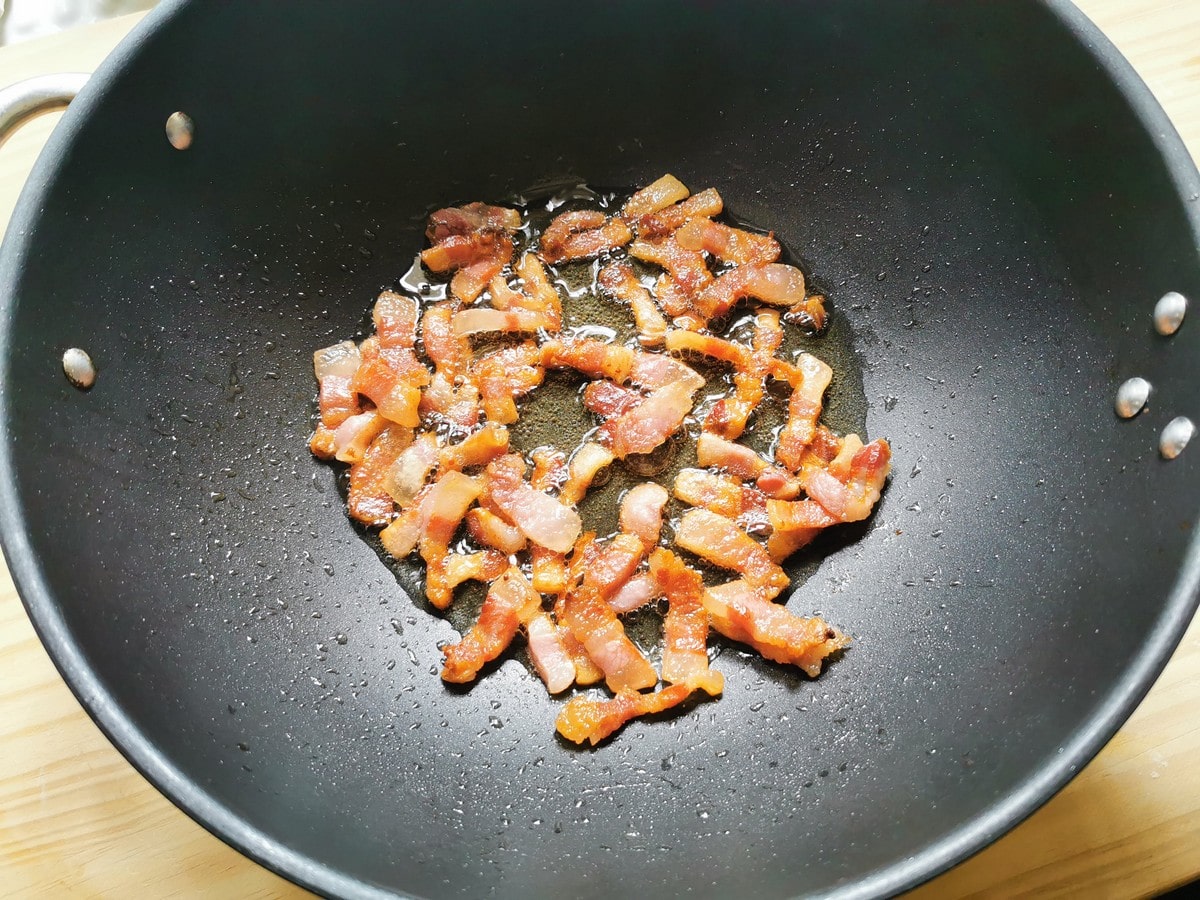

3) Once browned, remove the pork cheek from the pan, along with some of the rendered fat, leaving a small amount in the pan for the sauce.
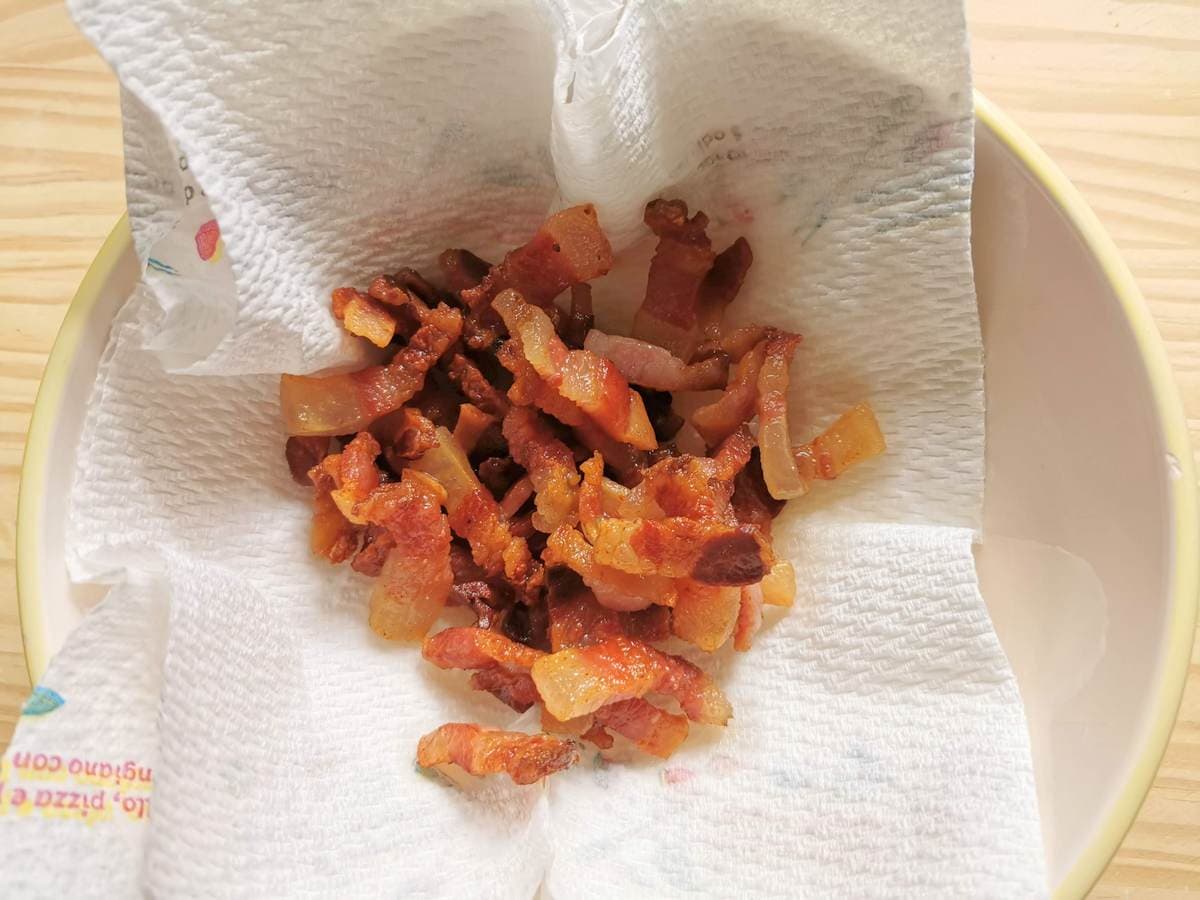

4) Add the peperoncino flakes to the pan and sauté for 10 seconds, just until fragrant.
5) Deglaze the pan with white wine, stirring to lift any browned bits from the bottom. Let the wine reduce for about 1-2 minutes, or until almost fully evaporated.
6) Add the canned tomatoes to the pan and cook for 10 minutes, until the tomatoes begin to break down and soften.
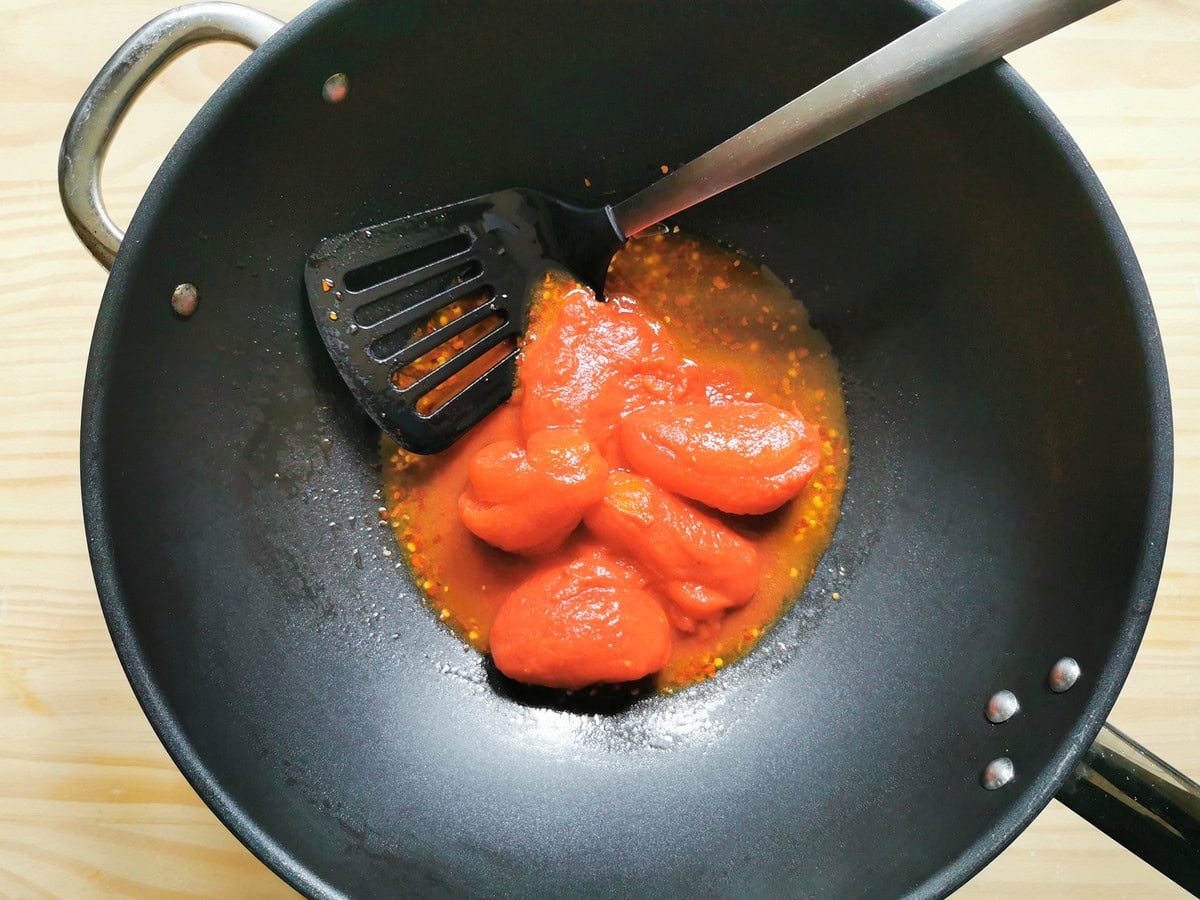

7) While the tomatoes are simmering, put a pot of water on to boil for the pasta. Add salt once it starts to boil and bring it to a rolling boil again.
8) Add the bucatini or spaghetti to the boiling water and cook until al dente according to the package instructions. Reserve some of the pasta water, then drain.
9) Return the cooked pork cheek to the tomato sauce and season with salt and black pepper to taste, keeping in mind that the pork is already salty.


10) Once the pasta is ready, add it to the sauce, along with a portion of the grated pecorino. Stir everything together over low heat until the pasta is well coated with the sauce. If needed, add a small amount of reserved pasta water to help bind the sauce.


11) Serve the pasta immediately, topped with more grated pecorino.
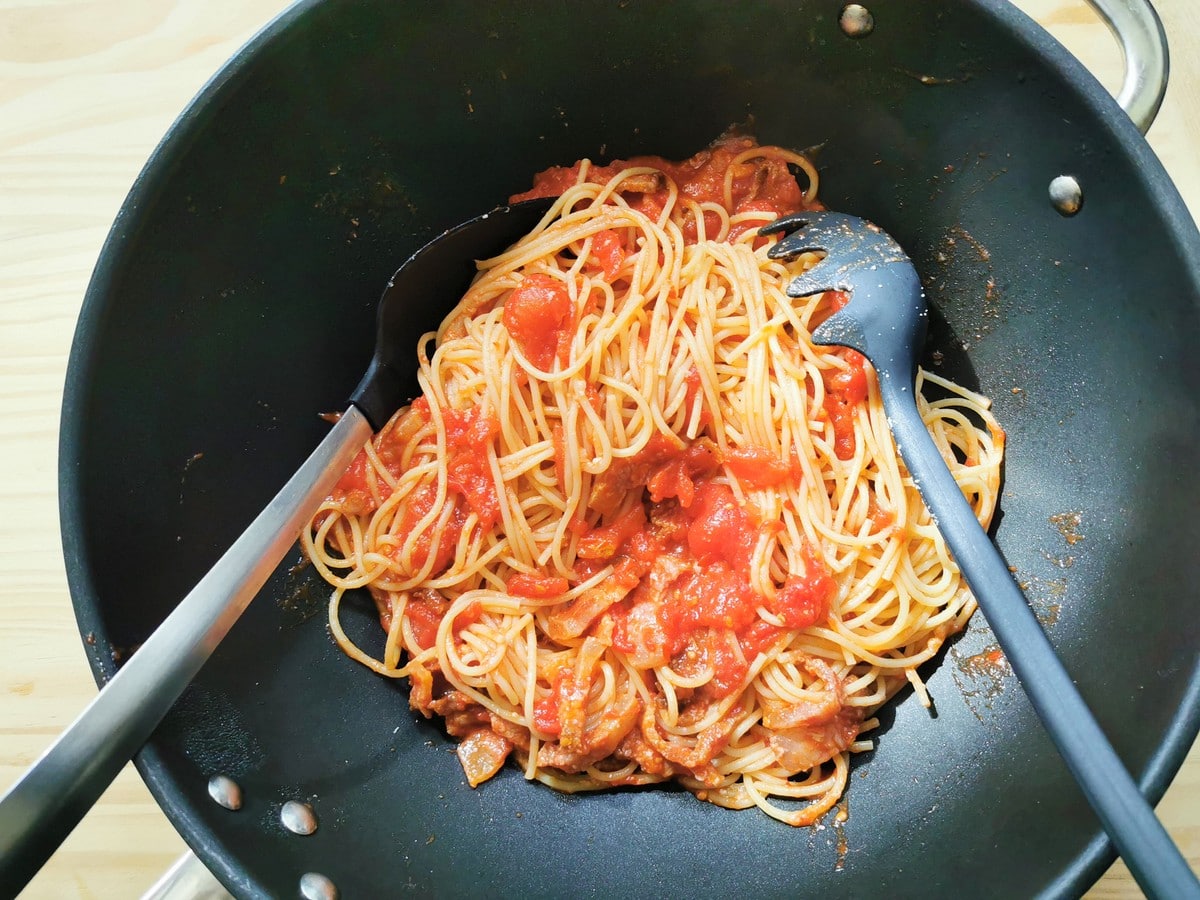

Storage and Leftovers
Allow the pasta to cool completely before transferring it to an airtight container. You can store leftover pasta amatriciana in the refrigerator for up to 3 days.
To reheat in the microwave, place the pasta in a microwave-safe dish, cover, and heat for 2 minutes. Stir the pasta, then continue reheating in 30-60 second intervals, stirring in between each, until heated through. Add a small splash of water if needed to loosen the sauce.
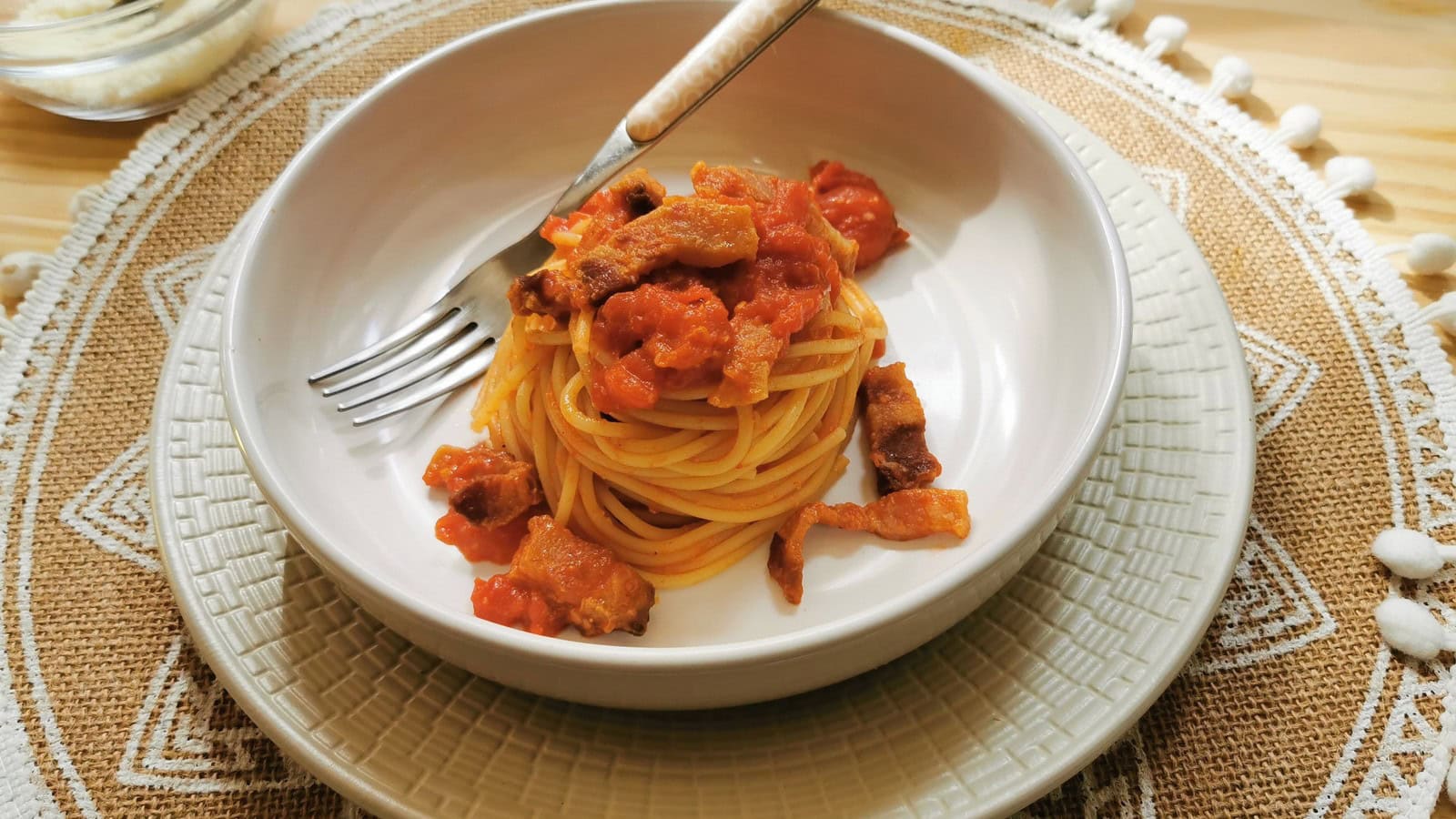

FAQs
Yes, pancetta can be used as a substitute for guanciale if needed. However, guanciale is the traditional choice and provides a richer, more authentic flavor. Thick-cut pancetta works best, but avoid small pre-cubed varieties for better texture.
In Amatrice, spaghetti is traditional, while in Rome, bucatini is the go-to choice. Both types of pasta work well for this dish, so choose based on your preference or availability. Some people also like this recipe with short pasta like rigatoni.
Yes, you can prepare the sauce ahead of time and store it in the refrigerator for up to 2 days. However, the guanciale will lose its crispiness when stored. For the best texture and flavor, I recommend making the sauce fresh and serving it right away.
More Recipes You May Like:
If you do try this bucatini or spaghetti Amatriciana recipe, I’d love to hear what you think. Please write a comment here on the blog or post a comment on the Pasta Project Facebook page.
Your feedback means a lot to me!
Buon Appetito!
(This recipe was originally published in 2017)
Pin for Later:


Reader Interactions

